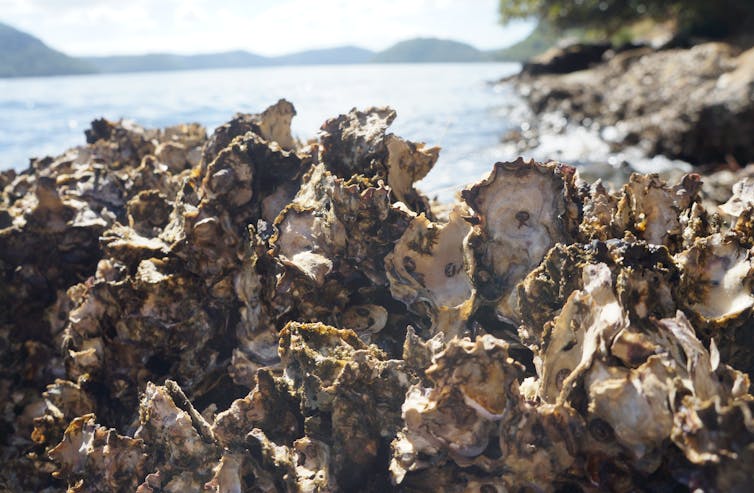In a new study, Jean-Charles Massabuau from University of Bordeaux and his colleagues investigated the impact of noise on 32 oysters in the laboratory, using a loudspeaker to play sounds underwater in a range of frequencies. The researchers found that oysters rapidly closed their shells at sound frequencies between 10 and 1000 hertz. Their maximum sensitivity was at low frequencies (between 10 and to 200 hertz).
The sounds and vibrations from breaking waves and currents are in the oysters’ sensitivity range, and the researchers propose that oysters may “hear” tidal cues that trigger appropriate behavior as the tide rises. In addition, most marine noise pollution is due to cargo boats, and most of the noise from shipping is at low frequencies that oysters “hear” best. Other sources of marine noise pollution also generatelow-frequency sounds, including explosions, seismic research, pile driving and wind turbines. All of these noises can thus muddle the normal oyster soundscape, and cause them to close their shells in response.
Research Article:
Charifi M, Sow M, Ciret P, Benomar S, Massabuau J-C (2017) The sense of hearing in the Pacific oyster, Magallana gigas. PLoS ONE 12(10): e0185353. https://doi.org/10.1371/journal.pone.0185353
http://journals.plos.org/plosone/article?id=10.1371/journal.pone.0185353
Editor at the digital magazine AquaHoy. He holds a degree in Aquaculture Biology from the National University of Santa (UNS) and a Master’s degree in Science and Innovation Management from the Polytechnic University of Valencia, with postgraduate diplomas in Business Innovation and Innovation Management. He possesses extensive experience in the aquaculture and fisheries sector, having led the Fisheries Innovation Unit of the National Program for Innovation in Fisheries and Aquaculture (PNIPA). He has served as a senior consultant in technology watch, an innovation project formulator and advisor, and a lecturer at UNS. He is a member of the Peruvian College of Biologists and was recognized by the World Aquaculture Society (WAS) in 2016 for his contribution to aquaculture.




